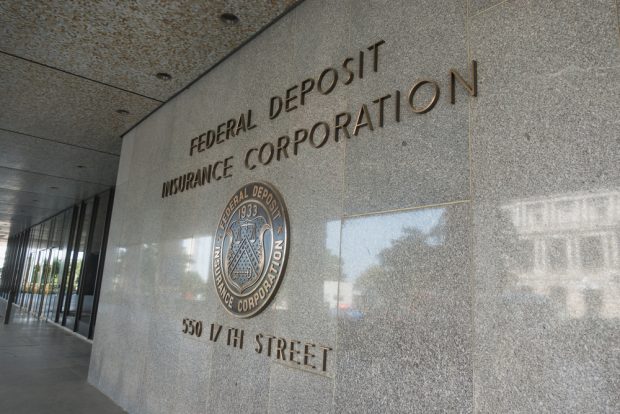Small credit unions are competing with geography and technology alike, against bigger financial institutions, payday lenders and check cashers, a branch on every corner and in the case of some rural credit unions, none for miles.
The man leading the federal effort to help small credit unions survive and compete puts it succinctly about the power of technology to level the playing field.
“On the Internet nobody knows you're a dog, I think is how the saying goes,” said Bill Myers, director of the Office of Small Credit Union Initiatives at the NCUA.
And that dog is on the hunt. While the OSCUI will still fund first-wave tech tools to help small credit unions compete such as ATMs and basic websites, the emphasis clearly is on mobile. A majority of its Community Development Revolving Loan Fund grants for new products and services at low-income credit unions so far this year have gone to enable mobile apps for rural and urban service areas alike.
“We used to fund upgrades and replacements like when your computer wore out and we'd replace it. We stopped doing that and now we're only going to fund forward moves,” Myers said. Those moves are not only less expensive than, say, when Myers in his credit union days used a UNIX box to print out overdraft notices, but they're effective, too.
“A text alert is like a penny and a half,” he explained. “I think small credit unions can present themselves well in this medium.”
Mobile banking is one such channel presenting two different competitive strategies at two contrasting low-income designated credit unions that have used those grants and others to create services for the underbanked. They are the $245 million St. Louis Community Credit Union in Missouri and the $188 million Hope Credit Union in Jackson, Miss.
The St. Louis credit union said it is pushing mobile banking to supplement its existing offerings, including heavily used branch services, while Hope FCU sees mobile banking as an entry point for people living in what it calls bank deserts in its service area in swaths of Mississippi, Arkansas, Tennessee and Louisiana.
St. Louis Community used a $6,439 grant from the NCUA to develop and market an app, according to Paul Woodruff, vice president of community development at the credit union. To keep it affordable, the cooperative used a ready-to-go mobile app to sit atop its Fiserv Portico core processing system. That app was from My Mobile Fans, a Carmel, Ind.-based outfit that advertises customized apps for as little as $299.
Woodruff said the app has been downloaded about 3,600 times since its February launch, with Android users outnumbering Apple users by about two-to-one.
“It hasn't started to relieve traffic in our branches yet, but it is another outlet to acclimate our membership to get more independent about how they handle money,” Woodruff said, adding it provides access to many who can't get to the 11 offices around the metro area.
“In addition to high-quality service, our hope is that having tools like this will ease the strain on our staff. We have huge numbers of members come into branches and call on the phone,” Woodruff said. “Anything we can to allow our staff to focus on loans and other things to help us keep our doors open, that's great.”
Meanwhile, Hope executives see their mobile outreach as a way to serve members who frequently face similar issues of lack of transportation, combined with the lack of available branches of any financial institutions for miles around in its rural service area, according to the credit union. Many of them cannot afford computers so they rely on their smartphones as their online link.
“Statistics show that Mississippi and Arkansas have the highest percentage of wireless users who have given up their landlines,” said Hope CFO Richard Campbell. “Low-income people who are getting smartphones are doing it not because they're greedy or excessive. It's because they're smart.”
He noted, “To survive in our world and our economy that's the cheapest way to go. They're largely bypassing computers completely. And if we're going to be their financial services provider, we have to understand that and put our emphasis there.”
Campbell said Hope launched a new mobile app in 2012 that has driven adoption sharply, now totaling 3,000 users, with 6,000 of the credit union's 29,000 members also banking online.
Hope worked on its mobile app development with Pablo DeFilippi, director of membership of the National Federation of Community Development Credit Unions in New York.
“These channels can help credit unions improve their reputations with low-income consumers,” DeFilippi said. “Think about why people drift away from financial institutions. They don't really have access to real-time information. That turns them into someone who is underbanked. “Mobile is a great tool for reaching out to people who don't see the mainstream as an option. It makes it accessible to them.”
Meanwhile, the idea of a branch desert came from the food deserts that are used to describe areas where grocery stores and fresh produce are not readily available, Campbell said. He worked with Andrew Tilbury, chief marketing officer from the Nevada-based Bluepoint Solutions to add mobile check deposit technology, in those areas defined as having less than two bank or credit union branches in a ZIP code.
“Richard kind of coined the term and my eyes almost fell out of my head when he showed me the map,” Tilbury said. “I was really stunned to see there were that few branches and that big a part of our country.”
The U.S. Postal Service has indicated its desire to provide more financial services from its branches, so mobile banking from Hope becomes even more of a competitive consideration.
Hope also is using mobile to supplement its 16 branches in four states by making new branches it builds and acquires essentially extensions of the mobile service, with no teller lines and an emphasis on self-service, Campbell said. Those centers will still offer the one-on-one, human touch the credit union stresses in its member relations regardless of channel.
That sounds like sound strategy to Mary Monahan, research director for mobile at Javelin Strategy & Research in Pleasanton, Calif.
“I definitely think this is an area of opportunity, especially if you understand your local community,” Monahan said. “People want to talk to someone, perhaps especially in that 25- to 34-year-old range.
“They're going to be buying cars, getting loans, all that even if they're underbanked. And they're going to become banked over time,” she said, adding that in her view, mobile bill pay and deposit checking are particularly crucial, because they allow people to do transactions without navigating neighborhoods that may be dangerous or distances that may be too great for their circumstances.
© Touchpoint Markets, All Rights Reserved. Request academic re-use from www.copyright.com. All other uses, submit a request to [email protected]. For more inforrmation visit Asset & Logo Licensing.






